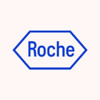
A Study to Evaluate the Safety and Clinical Response of Subretinal Administration of CNTO 2476 in...
Visual AcuityGeographic Atrophy1 moreThe purpose of this study is to evaluate the safety and performance profile of the suprachoroidal surgical approach and the Delivery System.

A Study to Evaluate Long Term Safety, Tolerability, and Effectiveness of Olesoxime in Patients With...
Muscular AtrophySpinalThe purpose of this open-label, single arm study is to further evaluate long-term tolerability, safety and efficacy outcomes of olesoxime in participants with Spinal Muscular Atrophy (SMA) who previously participated in one of the following two clinical studies: TRO19622 CL E Q 1115-1 (open-label Phase Ib, multicenter, single- and multiple- dose study) or TRO19622 CL E Q 1275-1 (NCT01302600, Phase II/III, adaptive, parallel-group, double blind, randomized, placebo-controlled, multicenter, multinational study).

Phase I-B Study to Evaluate the Safety, Tolerability and Efficacy of IZN-6NVS for the Treatment...
Atrophic VaginitisIn this open label study, 50 eligible women will be assigned to receive the investigational product (IZN-6NVS) - 2.5 g of cream/day for 14 days, followed by 3 applications per week for the next 4 weeks. Clinical assessment of the severity of vaginitis will be performed at baseline and after 2 and 6 weeks of treatment. The study will evaluate safety, tolerability and efficacy of IZN-6NVS vaginal cream, in the treatment of atrophic vaginitis (AV) and desquamative inflammatory vaginitis (DIV).

Study to Evaluate Safety and Efficacy of WC3011 (Estradiol Vaginal Cream) in Postmenopausal Women...
Vulvovaginal AtrophyThe purpose of the study is to determine if WC3011 is safe and effective in treating the symptom of painful intercourse secondary to vulvovaginal atrophy as measured by participant self-assessment when compared to vehicle.

Progression Rate of MSA Under EGCG Supplementation as Anti-Aggregation-Approach
Multiple System AtrophyMSA is a rapidly progressive disorder with an average survival time of about 7 years after the first clinical manifestation. No potent symptomatic treatment is currently available. A disease-modifying therapy does not exist either. The growing understanding in recent years of the underlying pathological mechanisms of the disease allows the development of new treatment options that have a modifying effect on the disease progression. Therefore, treatments are urgently required that effect the central underlying pathological mechanism, which appears to be the intracellular aggregation of toxic oligomers of α-synuclein. EGCG, a polyphenol found in green tea, has shown to inhibit the formation of toxic α-synuclein oligomers in vitro and has shown to transform α-synuclein-oligomers in non-toxic oligomer species. There is also evidence for a neuroprotective effect in MPTP-mouse models of PD and is an antioxidant and iron chelator. There are currently 63 clinical studies (http://clinicaltrial.gov) in which EGCG was applied for various indications, such as Multiple Sclerosis, various forms of cancer and Huntington's disease. All of which have shown good tolerability and safety with the applied doses of EGCG of up to 1200 mg per day, demonstrating the safety of the drug under controlled clinical conditions (see 5.3.1 for hepatotoxicity in uncontrolled conditions). These data provide a solid rationale for testing in a clinical trial if supplementation of EGCG can interfere with the core disease mechanism in MSA and consequently retard the clinical progression of the MSA-related disability.

An Open-label Safety and Tolerability Study of Nusinersen (ISIS 396443) in Participants With Spinal...
Spinal Muscular AtrophyThe primary objective of this study is to examine the safety and tolerability of nusinersen (ISIS 396443) administered intrathecally to participants with Spinal Muscular Atrophy (SMA) who previously participated in ISIS 396443-CS2 (NCT01703988) or ISIS 396443-CS10 (NCT01780246). The secondary objective is to examine the plasma and cerebrospinal fluid (CSF) pharmacokinetic(s) (PK) of nusinersen administered intrathecally to participants with SMA who previously participated in ISIS 396443-CS2 or ISIS 396443-CS10.

Dose-relationship of Vaginally Administrated Oxytocin in Postmenopausal Women
Vaginal AtrophyUp to 50% of all postmenopausal women, experience vaginal drynes, i.e. vaginal atrophy is a consequence due to the lack of estrogen. In addition, vaginal atrophy is associated with an increased pH, which creates an environment more susceptible to infections . The mucosal epithelium shows signs of severe senile atrophy and cytological examination demonstrate increased number of the basal and parabasal cells and reduced number of superficial cells . Unlike some other menopausal symptoms (for instance hot flushes), vaginal symptoms generally persist or worsen with aging.Oxytocin is a peptide hormone and it is released systemically via the posterior pituitary. The most well known effects of oxytocin are its roles in female reproduction such as facilitation of birth and breast feeding. Oxytocin has also shown to exert positive effects on the proliferation of human vaginal mucosal cells from postmenopausal women, an effect which could be attributed either to the direct stimulation of new cell formation or to an increased production of other growth factors. The primary objective is to investigate the dose relationsship of topical administrated Vagitocin on the vaginal mucosal membrane, measured in the change (%)of superficial cells up to 7 weeks after baseline.

Treatment of Atrophic Acne Scars With Platelet-Rich Plasma and Skin Needling
Atrophic Acne ScarsInvestigators will collect blood specimens from the participating patients and then blood samples will be centrifuged in order to collect platelet-rich plasma which is going to be injected in the atrophic acne scars. A split-face design is going to used in this randomized controlled trial. In the control side of the face, micro-needling to the skin will occur using a specific tool (Dermapen).

A Clinical Trial of Dantrolene Sodium in Pediatric and Adult Patients With Wolfram Syndrome
Wolfram SyndromeDiabetes Mellitus2 moreWolfram syndrome is a rare genetic disorder characterized by juvenile-onset diabetes mellitus, diabetes insipidus, optic nerve atrophy, hearing loss, and neurodegeneration. The purpose of this study is to assess the safety and tolerability of dantrolene sodium in patients with Wolfram syndrome. In addition, we will assess the efficacy of dantrolene sodium on the cardinal manifestations of Wolfram syndrome, including visual acuity, remaining beta cell functions, and neurological functions. There is a screening period up to 56 days, a 6-month treatment period with an optional extension phase up to 24 months, and a 4-week safety follow-up period. Study assessments include medical & medication history, physical exams, neurological exams, eye exams, endocrine exams, vital signs, height, weight, electrocardiograms, blood and urine tests, pregnancy test if applicable, and questionnaires.

Reconstruction of Jaw Bone Using Mesenchymal Stem Cells
Bone AtrophyThis pilot study is aimed to reconstruct atrophied posterior alveolar mandibular ridges using biomaterial and autologous bone marrow derived stem cells (BMMSC) and to insert an implant into the new bone in a prosthetically guided position.
